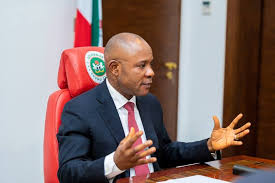A fresh disagreement has erupted between two of the most respected kings in Yorubaland — the Alaafin of Oyo, Oba Abimbola Akeem Owoade I, and the Ooni of Ife, Oba Enitan Adeyeye Ogunwusi. The issue? The Ooni recently gave a chieftaincy title, “Okanlomo of Yorubaland”, to a popular businessman, Dotun Sanusi, also known as Ilaji.
However, the Alaafin strongly objected to this move, arguing that the Ooni had no right to confer a title that applied to the entire Yorubaland. According to him, only the Alaafin of Oyo has the authority, by tradition and court rulings, to bestow titles that cover the entire Yoruba race. He accused the Ooni of overstepping his boundaries and demanded that the title be withdrawn within 48 hours.
This disagreement has raised questions again about who holds more power and authority in Yorubaland. To understand this better, we need to look into Yoruba history and the roles of both the Alaafin and the Ooni.
The Origin of the Yoruba People
It is a well-established and universally accepted fact that Oduduwa is the ancestral founder of the Yoruba people. There is no dispute about this. It is also clearly known that Oduduwa had only one child, a son named Okanbi — another fact that remains unchallenged across historical records. Furthermore, it is commonly agreed that Okanbi had seven children: five sons and two daughters — a truth that remains solid and uncontested.
The firstborn child was a daughter, who married the high priest of their time, known as the Onirisa. The first male child from that union would go on to become the Olowu of Owu. The second child, also a daughter, gave birth to the founder of the Ketu kingdom, known today as the Alaketu. It is indeed curious — and perhaps a tale for another day — how these two sons, born of royal daughters, rose to kingship despite their maternal links to royalty.
Okanbi’s third child, a son, eventually became the ruler of the Benin kingdom. The fourth son, known as Orangun, became the king of Ila. The fifth took the title Onisabe, ruling over the Sabe people in present-day Benin Republic. The sixth, the Olupopo, ruled the Popo kingdom, also located in today’s Benin Republic. Finally, the seventh and youngest son, Oranmiyan, stands out as a key figure in Yoruba history.
All of these sons went on to become crowned kings, each wearing a beaded crown, which set them apart from subordinate chiefs or vassals, who only wore coronets, called Akoro. These lesser rulers dared not wear crowns, a right reserved only for those of royal descent.
Now, it’s worth noting that the Benin people themselves have their own version of events regarding Oranmiyan, but that discussion is best left for another time. Still, as we examine this family tree, we can see that the first prince from Okanbi’s line was the King of Benin. This often leads people to ask: Why isn’t he regarded as the highest-ranking Yoruba king?
The answer lies in traditional royal custom: the first son born after a king has taken the throne is recognized as the heir and crowned prince, regardless of how many older siblings exist. In this case, Oranmiyan was the only son born after Okanbi became king, and that made him the rightful heir to the throne. None of his older brothers contested his position.
Oranmiyan was known as a brave warrior and adventurer, always seeking new territories. After becoming king in Ife — and it should be noted that up until his time, no king in Ife had ever used the title “Ooni” — Oranmiyan made the decision to expand his domain. He gathered a group of trusted men and set out to explore and conquer new lands.
Dating back to the era of Oduduwa, every king had a chief priest, who was responsible for daily worship of the gods and upholding spiritual rites. This priest held the title Oonirisa, a shortened form of Olorisha, which means “custodian of the deities.” Importantly, these priests were never from the royal bloodline — they were purely spiritual leaders, not rulers. This division of roles between kings and priests mirrors what is seen in many ancient traditions, including Biblical times, where kings and priests served different purposes. Some even argue that this structure supports the theory that the Yorubas originated from Egypt, not Mecca — but again, that’s another story.
Even to this day, all the deities in Ile-Ife must be worshipped daily. So, when Oranmiyan decided to go on his conquests, he knew he couldn’t neglect the spiritual responsibilities back home. He understood that he needed divine support for his journey to be successful. Therefore, he left the chief priest behind in Ife to continue the worship of the gods and offer guidance to the people during his absence.
While Oranmiyan went on to establish what would become the mighty Oyo Empire, stretching from the banks of the River Niger all the way to Popo town in what is now the Benin Republic, the priest remained in Ife. This priest — later recognised as the first Ooni — was put in charge of the Ife people as a caretaker ruler.
Meanwhile, Oranmiyan ruled as the Alaafin, the supreme leader of the growing Oyo Empire. Whenever the priest (Ooni) in Ife needed direction on important issues, he would send messengers to the Alaafin, who then gave clear instructions on what actions to take.
As time passed, the sons of these early priests in Ife (the Oonis) began taking over from their fathers, and over the generations, they too became rulers. However, they always acknowledged the superior authority of the Alaafin in Oyo. In fact, for centuries, no Ooni ever challenged the Alaafin’s supremacy — this remained true until the time of the late Ooni Oba Okunade Sijuwade, who was the first to question that tradition before his passing.
Throughout history, the Alaafins have always extended special recognition to just two kings: first, the Ooni of Ife, because he occupies the same throne once held by Oduduwa, and second, the Oba of Benin, because he is the eldest among Oduduwa’s descendants. However, giving respect does not mean surrendering authority. The Alaafin recognizes these roles out of tradition and courtesy, but he retains the highest power and leadership among Yoruba kings.
Who Is Truly the Superior King in Yorubaland?
This has long been a topic of debate. Some people believe the Ooni of Ife is the most important king because he sits on the ancient throne of Oduduwa, the father of the Yoruba people. Others argue that the Alaafin of Oyo holds more power because he ruled the vast Oyo Empire and had control over political and military matters.
The truth is that both kings are important, but in different ways:
The Ooni of Ife represents the spiritual and religious roots of the Yoruba people.
The Alaafin of Oyo represents the political, territorial, and traditional authority of the Yoruba empire.
Even though the Ooni’s throne is ancient, tradition and history recognise the Alaafin as the only king who can give titles that span all Yoruba lands. The Ooni was historically a spiritual leader, while the Alaafin was the commander of the empire.







